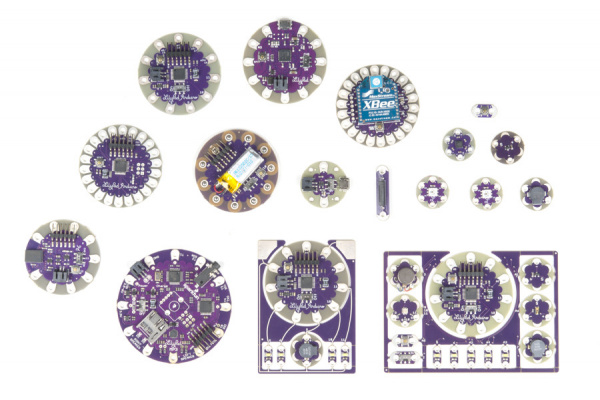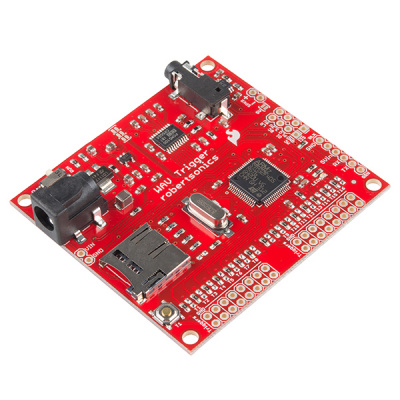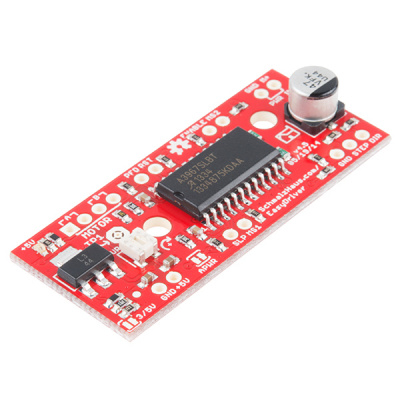How to Sell Your Widget on SparkFun
Choose Your Adventure
Have an awesome electronic widget that you want to get to market? Great! We are always listening to new ideas from our customers and the community. We get many inquires on this topic, so read this tutorial carefully to keep your product pitch from getting lost in the shuffle.
We're lucky, here at SparkFun, to have an amazingly creative and talented group of customers. Not only can they identify gaps in the catalogs of electronics suppliers, they can create a gizmo that fills that hole. But, going beyond a prototype or even a limited-quantity production run, often the hardest task in getting your world-alterring product out there is producing, marketing, and/or selling it to the masses. That's where we come into the picture. We recognize that there comes a certain benefit to having your product in our catalog and we want to give you the best chance to have that. However, the partnership needs to make sense for both parties (maybe more parties) involved.
We strive to keep the SparkFun catalog of products curated. A selection of products that help get your project completed that we would use ourselves. So regretfully we cannot take all products brought to us. Below we have outlined what we look for, how we can possibly work together, and the steps to take in order to properly submit your product for evaluation.
SparkFun aims to sell parts and boards pertinent to DIY electronics. This may touch on areas relating to education, prototyping, and product design. Among the reasons for stocking certain products, we look for things that are helpful, cutting edge, useful in a broad spectrum, and appealing the community. We want products that make things easy for the user, but at the same time, do not constrain the possible uses for the product.
Over the years SparkFun has helped to bring dozens of unique widgets and useful electronic shortcuts -- dreamt-up and designed by our customers -- to the throngs of electronics hobbyists, artists, and students. We've gone through this process enough to know how to guide any product through it. The goal of this tutorial is to walk you through two of the most common routes previous collaborators have followed in getting their widgets sold on SparkFun. Which route you choose mostly depends on who is manufacturing your product. Time to choose your adventure.
Option 1: You Manufacture, SparkFun Buys and Resells
Have you already set up a manufacturing process for your design? Whether you're cooking the boards in your basement reflow toaster, or working with an established assembly house, we might be interested in reselling it. What really matters is that you have a solid, tested design, a manufacturing process set up for it, and a market starving to buy it.
Hundreds of products in the SparkFun catalog go through this process, including:
- Makey Makey Classic -- Originally a collaboration with Jay Silver, Eric Rosenbaum, and SparkFun. The latest board version is now being redistributed with JoyLabz in our catalog.

- Raspberry Pi 3 -- A powerful SBC that SparkFun buys, stores in our warehouse, and resells.

- BITalino - BioMedical Development Kit -- Another product that SparkFun buys and distributes via our online catalog.

It's the fastest route to our storefront, if that's what interests you the most. Check out this half of the tutorial to find out more about how to pitch your product.
Option 2: SparkFun Manufactures, and Pays You a Royalty Per Sale
Have you prototyped your design, and proven that it works, but gotten stuck trying to produce and sell it? Well it just so happens that we have pick-and-place machines, reflow ovens, and a all-star production team that can help with manufacturing. Plus, our engineers can help polish the design along the way.
The best part about this option is you still get paid. Instead of buying the products up-front, we pay you a percentage-based royalty per product sold.
We do have limited production and design resources, so there's no guarantee that we can take your product on. But if it's unique enough, and fits within our manufacturing abilities, we're certainly interested in working with you to help productize your widget. Here are few examples include:
- LilyPad Ecosystem -- The LilyPad system was designed by Leah Buechley while pursuing her Ph.D. in computer science at the University of Colorado Boulder. The commercial version of the kit, which launched in 2007, was collaboratively designed by Leah and SparkFun Electronics.
- WAV Trigger -- The WAV Trigger is a unique high-fidelity polyphonic audio player with surprising capabilities. The board is a collaboration with Jamie Robertson. Another product we manufacture and pay royalties per sale for continued support and development.
- EasyDriver -- The EasyDriver is a simple to use stepper motor driver. The board was co-designed with Brian Schmalz. It is another product that we manufacture and pay royalties per sales for continued support and development.
These products have all gone through this process, and are now some of the highest-selling, most important products in our catalog. Check out this section of the tutorial to learn more about how to pitch your design.
So, it all begins by figuring out who's producing the widget. Read on to learn more about each option. At the end is a form you can use to submit your project/product/idea for review. Please read the entire tutorial before submitting as there is very pertinent information involved.



